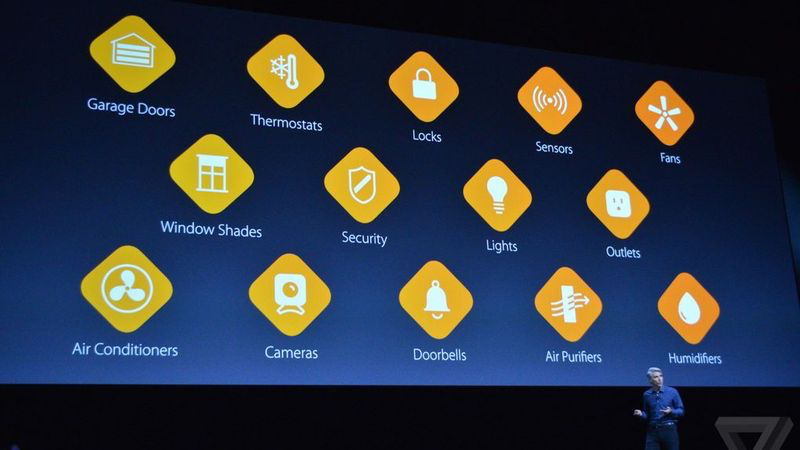The announcement of the Home app — which is coming in iOS 10 — is a positive step forward for Apple, because there’s finally a central app to manage the IoT devices comprising the HomeKit ecosystem, according to Blake Kozak, principal analyst, smart home, IHS Technology. (HomeKit is a framework that allows control of compatible home automation devices through iOS and Siri.)

Prior to Home, users needed to download third party apps, in order to control their devices. However, what has been a very long and drawn out release — partially because of the security requirements developers must meet such as encryption with 3072-bit keys and secure Curve25519 that guarantee the security of HomeKit devices — may finally gain traction in the smart home market, says Kozak.
The Home app is deeply integrated into iOS, delivering a way to set up, manage and control your home in one place. Accessories can be managed individually or grouped into scenes so they work together with a single command and can be controlled by using Siri. They can be managed remotely or set up for home automation with Apple TV, and can respond with automatic triggers set by time of day, location or action.
Currently, there are about 20 HomeKit-compatible brands, according to Apple’s website; however, the Home/iOS 10 announcement suggests many dozens more are either already compatible or are in the process of becoming compatible. By way of comparison, Samsung’s SmartThings supports about 50 brands.
What’s more, Apple has announced the ability for single login and search capability for television shows or genres on the Apple TV just by speaking to Siri. While this is a necessary step, there are other platforms already offering apps and voice control for entertainment, including Comcast X1.
“As they relate to the smart home market, these latest announcements from Apple are far from groundbreaking, but Apple customers – by and large — are not interested in individual devices or widgets,” says Kozak. “Many Apple users are interested in advances in the Apple ecosystem, which will be provided as these developments continue to evolve. The challenges Apple now faces are twofold.”

First, the number of compatible devices is far less than other existing ecosystems today. As a result, users will likely buy into the closely controlled Apple ecosystem, knowing the devices will work (and it is only a matter of time before more device developers create products that are interoperable), says Kozak.
Second, unlike Amazon Echo, Siri isn’t “always on.” However, Apple does allow a “Hey Siri” feature for older devices on AC power, while iPhone 6S and other newer models do not require AC power.
Kodak says that, overall, the unique benefits from Apple’s latest smart-home announcements include the following:
- Potentially easier installation and pairing of devices to the central platform
- The Home app icon provides a continuous list of the types of scenes and devices available, which will help promote other products and speed purchasing
- A single app brings all products together, but the iOS offers something slightly different – the ability to use the control center to manage devices, so there’s no need to manually open an app; moreover, interaction with devices can happen within the lock screen
- With the HomeKit ecosystem, like other do-it-yourself systems, devices can be purchased ad hoc and when they are needed – which is a benefit over professional services
- Greater integration with voice assistance, through more open developer programs
“Despite the new Siri enhancements, HomeKit still uses a mobile app as its primary user interface. After the launch of the Amazon Echo, this smart-home paradigm seems a bit antiquated to many industry watchers,” says Kozak. “Apple has placed a big bet on serious security being required by consumers. If that turns out to be true, HomeKit has a major advantage over competitors. If not, they’ll have a cost disadvantage.”
Finally, Apple TV is an optional component, but it’s an important one for the full HomeKit experience, he adds.
It’s also questionable whether a non-mobile, permanent device is even necessary, as the user interface platform in the smart home, does Apple still need an Echo-like device that is more focused on smart home rather than media streaming, or is it enough to rely on transitory mobile devices?” Kodak says. “We should know in the next 12 months, once iOS 10 is rolled out and developers begin integrating devices more heavily into HomeKit.”
Aurora HDR: The only Mac app you’ll need for High Dynamic Range photography
